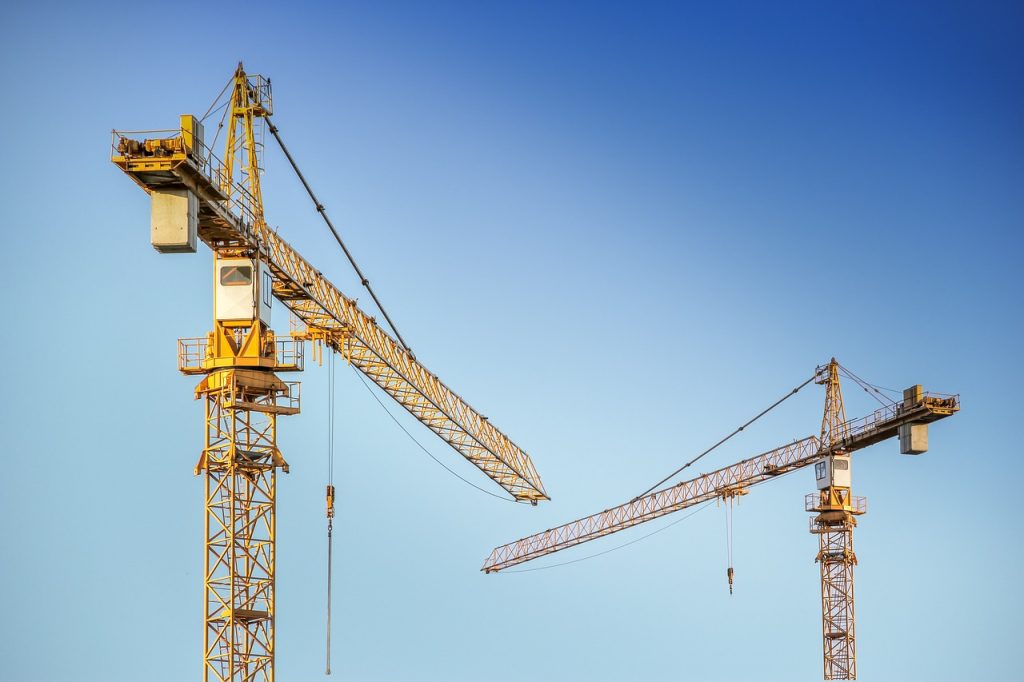In the past few months we’ve seen many reports of turbulence in the U.S. Real Estate market. We’ve seen wild offers that were way above asking price, increase in construction rates and demographic changes in varying states within the US. At Realya, we’re convinced that these trends are related to the Covid-19 outbreak. After 14 months of uncertainty, I’ve decided to organize my thoughts and share them with you in order to better understand how we’re going to move forward in the ‘new normal’.

What’s going on in the big cities?
With the pandemic outbreak, the outward immigration trend jumped drastically. Many we’re afraid to get infected in the high density streets, the high cost of living when local businesses were closed during the lockdowns and high crime rates plagued the streets. Remote work, unemployment and distance from family encouraged many to leave urban centers for larger living spaces.
We have examined whether the panic is real and if the exodus from metropolitans was really that significant. We also looked at the demographic groups of the recent movers, and where they were headed. A survey by the US Census Bureau shows that between February to August 2020 only 4% moved (1). The survey showed that most movers were going to the suburbs of the same metropolitan area they were living in. 10% of 18-29 year olds also made the move, many of them are students who wanted to be with their families. Most of the movers in the survey were marking their move as permanent. This statistic matches with those who are doing remote work and thus are more financially capable whereas those who don’t, and rely on local industries, such as hospitality and tourism. On the other hand, this trend applies less to older demographics who are more vulnerable to the virus but tend to be even more resistant to change.
According to the same survey, only 0.5% left the largest US metropolitans like New York, San Francisco, Los Angeles and Chicago as opposed to popular destinations in the Covid era such as Myrtle Beach, Austin, St. George and cities in the Sun Belt, which has seen a population increase by 3-4%. Since the beginning of the pandemic housing prices dropped in the big cities, but have slightly risen since last winter. The New York Post and 6sqft advised readers to buy since the prices are relatively low (3)(4). These trends are showing an increase of outbound immigration from the large cities, yet do not give the full picture for the currently peaking market.

People moving during the pandemic (8)
Who’s moving?
Before the pandemic, most moving decisions were based on professional considerations, affordable living costs, taxes and lifestyle choices. There are varying demographic groups who have chosen the suburbs. Many of the new suburban implants are middle-upper class, and some can work from home. Another prominent group leaving the cities are the millennials who have found their time to start a home with their young families and are a driving force in the buyers’ market. Another group are fresh retirees who are seeking more comfortable lives in warmer climates. The large cities have experienced less inbound immigration since March 2020.

From the city to the suburbs
The big winners of the Real Estate boom during the pandemic are the suburban towns who have seen a 43% year-over-year increase in moving rates (2). Many Americans are choosing the suburbs over rural areas and city centers since the suburbs offer many of the same amenities available in cities. A WSJ article mentioned that as many as 150,00 households have left New York City for less dense areas such as New Jersey and Connecticut (2). Some Bostonites have chosen the New Hampshire area. Californians came across harsh Covid restrictions and high taxes that urged them to make the move to states like Texas and Nevada. In addition, many vacation destinations in the Sun Belt like Nashville and Colorado Springs have also attracted many new buyers.

Net flow of households by county type, monthly (WSJ, 2)

Top 50 cities that gained movers during the pandemic (8)
A red hot market
Real Estate jokes are running on social media and finance experts are making comparisons to the 2008 financial collapse. We’re estimating that the state of the housing market is more complex than that. The high demand for housing is tangible: people are after single family homes, the shortage of housing inventory is deep, some are worried about inflation while the mortgage rates are down. These four factors are creating a massive median home price increase, which will likely to continue to increase for months to come. So far, it doesn’t seem like it’s a bubble like 2008.

Top 10 most in demand US cities in March 2021 (7)
Increased construction rates
As a result of the deepening housing inventory shortage, contractors are trying to keep up with demands. So far there’s been a 116% increase in building permits. The construction rates have slowed after the 2008 collapse and thus the inventory is down by 30% and prices increased by 21% (5). A quarter of the yearly number of houses were built in the first quarter of 2021. These trends are causing homeowners to reconsider selling their homes as the buyers’ market gets more competitive and they might not be able to find a new home to buy. Therefore increased construction rates are expected to continue at least until the prices balance out and become affordable again. Lately we’re seeing reports of jumping lumber costs due to disruptions in the supply chain as a result of the pandemic measures.
Those who can’t buy, rent
Most American households can’t compete in the bidding wars of the current buyers’ market, so they are forced to rent. The median home price reached a new record of $329,100 last March, a 17.2% increase year-over-year. A Vox article pointed out that more people are renting single-family homes rather than apartments, and the number of renters increased by 29% (6). As many as 60% of single-family home renters have flocked from city centers. This trend reinforces the same demand that caused home prices to go up. Occupancy rates of single-family homes are at a solid 95% in the first quarter of 2021. The rent prices are going up steadily, at 4% in February year-over-year, as opposed to the buyers’ market. With the price increase of single-family homes, homeowners would rather wait before they sell their property. With remote work, renting has become a better option than buying a house.

The Covid crisis has created a strong sense of uncertainty everywhere. Many were wondering how it would influence the U.S. housing market, and now we’re seeing that it ramped up existing trends. 14 months into the pandemic and Americans are seeking their way to single-family homes in the suburbs. Developers are stepping up to fill the house inventory. We’re seeing a transformative time in the market.
With the pandemic coming to an end, I’m expecting a stabilization in the market due to more inventory. Right now only corporations and wealthy buyers are able to snatch up properties. The stabilization in home prices will create a more fair market, but will keep low-income demographics outside of the buyers’ market. Rents in affordable housing will keep going up while federal budgets for subsidized housing are likely to grow. The millennials will continue to be the primary buying force in the suburbs as they’re looking for more spacious homes for their young families and the cities will recover as we go back to normal with the vaccines. The transformation of the American housing market has shown us a change in people’s priorities as a result of the lessons of the pandemic.
Sources:
- Wichter, Z. (2020, October 20). USPS Data Shows Where People Moved During The Pandemic. Bankrate. https://www.bankrate.com/real-estate/moving-data-shows-exit-from-cities/
- Campo-Flores, A., Overberg, P., Avila, J. D., & Findell, E. (2021, April 27). The Pandemic Changed Where Americans Live. The Wall Street Journal. https://www.wsj.com/articles/pandemic-supercharged-changes-in-where-americans-live-11619536399#_=_
- Schulz, D. (2021, March 29). What will post-pandemic real estate look like in NYC? Experts weigh in. 6sqft. https://www.6sqft.com/what-will-post-pandemic-real-estate-look-like-in-nyc/
- Byrne, K. J. (2021, May 26). NYC exodus will end in April, real estate analyst predicts. New York Post. https://nypost.com/2021/04/03/nyc-exodus-will-end-in-april-real-estate-analyst-predicts/
- Tanzi, A. (2021, April 26). Hot U.S. Housing Market to Get Supply Boost With New Listings. Bloomberg.com. https://www.bloomberg.com/news/articles/2021-04-26/hot-u-s-housing-market-to-get-supply-boost-with-new-listings
- Molla, R. (2021, May 4). The home sales boom means you might end up renting. Vox. https://www.vox.com/recode/22407667/home-sales-boom-rent-housing-single-family-rental
- Passy, J. (2021, April 27). The No. 1 emerging property market in America isn’t in Texas or Florida – you may never even have heard of it. MarketWatch. https://www.marketwatch.com/story/the-no-1-emerging-property-market-in-america-is-not-texas-or-florida-you-may-never-even-have-heard-of-it-11619525977
- Bowman, C. B. (2021, June 1). Coronavirus Moving Study Shows More Than 15.9 Million People Moved During COVID-19. MYMOVE. https://www.mymove.com/moving/covid-19/coronavirus-moving-trends/


